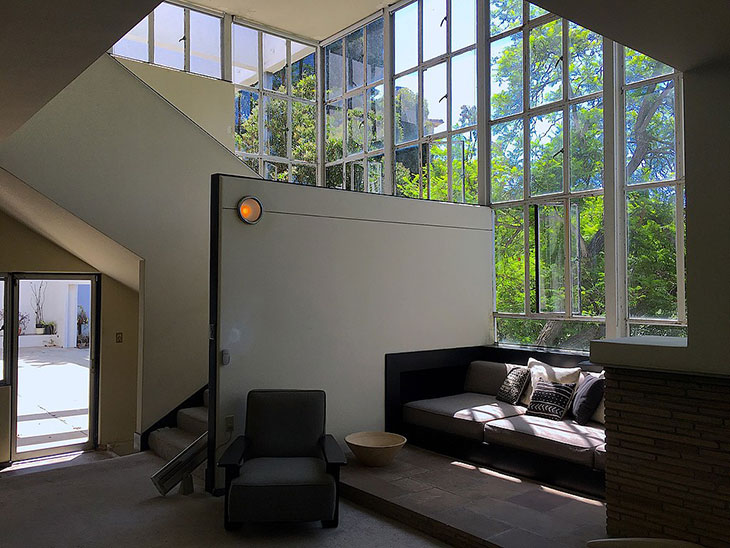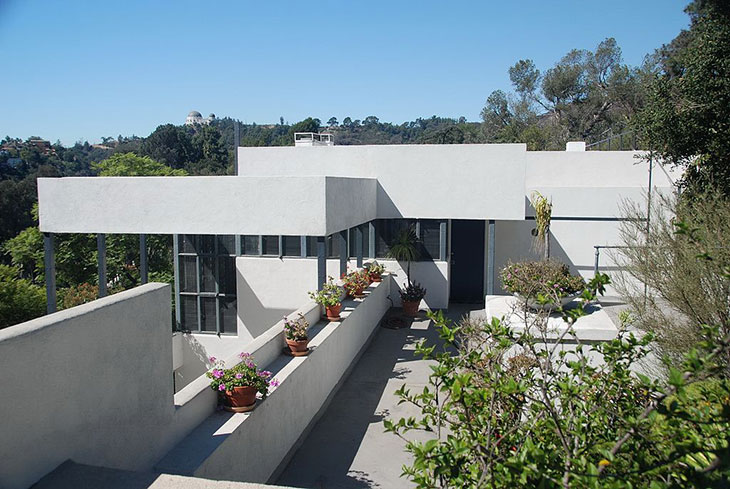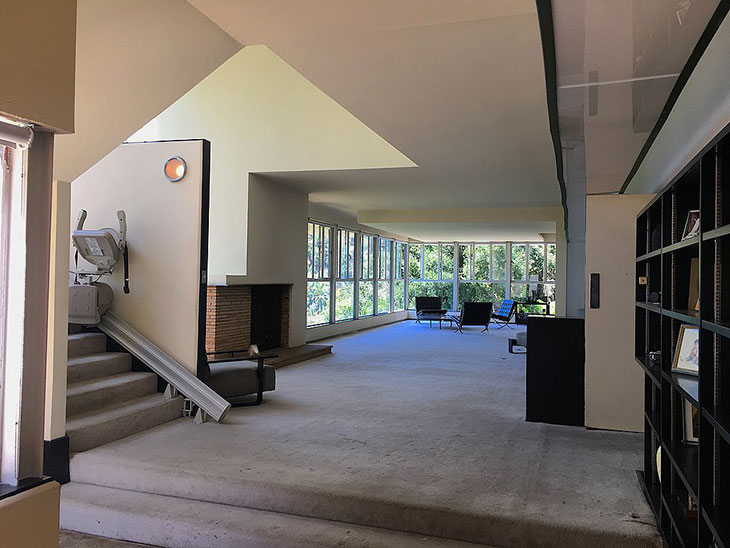
The Lovell House, designed by the iconic architect Richard Neutra, stands as a seminal work in the development of modern architecture in the United States. Completed in 1929 in Los Angeles, California, this house represents Neutra’s visionary ideas and embodies the principles of the International Style, which emphasized volume over mass, balance rather than preconceived symmetry, and the rejection of ornament.
ARCHITECTURAL
LANDMARKS
Richard Neutra, an Austrian-American architect, moved to the United States in 1923 and quickly became a key figure in the modernist architecture movement. Neutra was deeply influenced by his European contemporaries, especially the work of Le Corbusier and the Bauhaus school in Germany. These influences are evident in the Lovell House, which was commissioned by Philip Lovell, a health and fitness advocate and columnist for the Los Angeles Times.

Design Philosophy
and Architectural Features
The Lovell House was groundbreaking in many respects. It was one of the first homes in the United States to utilize a steel frame structure, which was more commonly seen in industrial buildings at the time. This steel construction allowed Neutra to create a series of dramatic cantilevered balconies and terraces, which seemed to float above the rugged landscape, offering expansive views of the surrounding environment. The use of glass walls and sliding doors further dissolved the boundaries between interior and exterior, a hallmark of Neutra’s designs that promoted harmony between man and nature.
This architectural masterpiece features a minimalistic aesthetic with an open floor plan, another signature of the International Style. The interior spaces are flexible and fluid, devoid of unnecessary walls or partitions, which allows for ample natural light and a sense of openness that was revolutionary at the time. Neutra’s design also included built-in furniture and hygienic features such as metal and chrome surfaces, which were easy to clean and reflected Lovell’s health-centric lifestyle.
Material Innovation
and Landscape Integration
Neutra’s innovative use of new materials and technology was not just limited to the structure itself. He incorporated outdoor sleeping porches, a reflecting pool, and other elements that emphasized the physical and psychological well-being of the inhabitants. The design of the Lovell House also took careful consideration of its site; the house was meticulously positioned to harness the natural elements, such as sunlight and air, to maximize comfort and energy efficiency.
The landscaping of the Lovell House was also integral to the overall design. Neutra collaborated with landscape architects to create an environment that complemented the architectural simplicity of the house. Native plants were used to blend the building into its California hillside setting, reinforcing the connection between the built environment and the natural world.

Impact on Modern Architecture
and the International Style
The Lovell House is often cited as one of the finest examples of the International Style in America. It not only influenced contemporary residential architecture but also signaled a shift towards new architectural thinking in the U.S. during the early 20th century. The International Style, which emerged in the 1920s and 1930s, advocated for simplicity, the use of industrial materials, and a functional approach to architectural design. These principles were clearly articulated in the Lovell House, which stood in stark contrast to the traditional styles prevalent in the U.S. at the time.
Neutra’s work, including the Lovell House, played a crucial role in popularizing the International Style in America. The style’s emphasis on minimalism, functional use of space, and integration with the environment resonated with the modernist ethos of the time and paved the way for future architects to explore and innovate. The Lovell House was a manifesto of Neutra’s architectural philosophy and a beacon for modern architecture in America.
Legacy and Preservation
Today, the Lovell House remains an iconic piece of architectural history, preserved as a testament to Neutra’s genius and the enduring appeal of the International Style. It continues to attract architects, students, and design enthusiasts who seek to understand the roots of modern architectural practices and the evolution of residential design. The house has been featured in numerous films, documentaries, and publications, each highlighting its revolutionary design and its impact on the development of modern architecture in the United States.

The Lovell House by Richard Neutra is a stunning example of architectural innovation and a crucial piece in the narrative of the International Style. Through its open layouts, integration with nature, and use of new materials and technologies, it represents a pivotal moment in architectural history, where form and function met to create something truly groundbreaking.




not even aware of how much this house has influenced modern architecture! bravo for covering neutra’s work Archiscene!